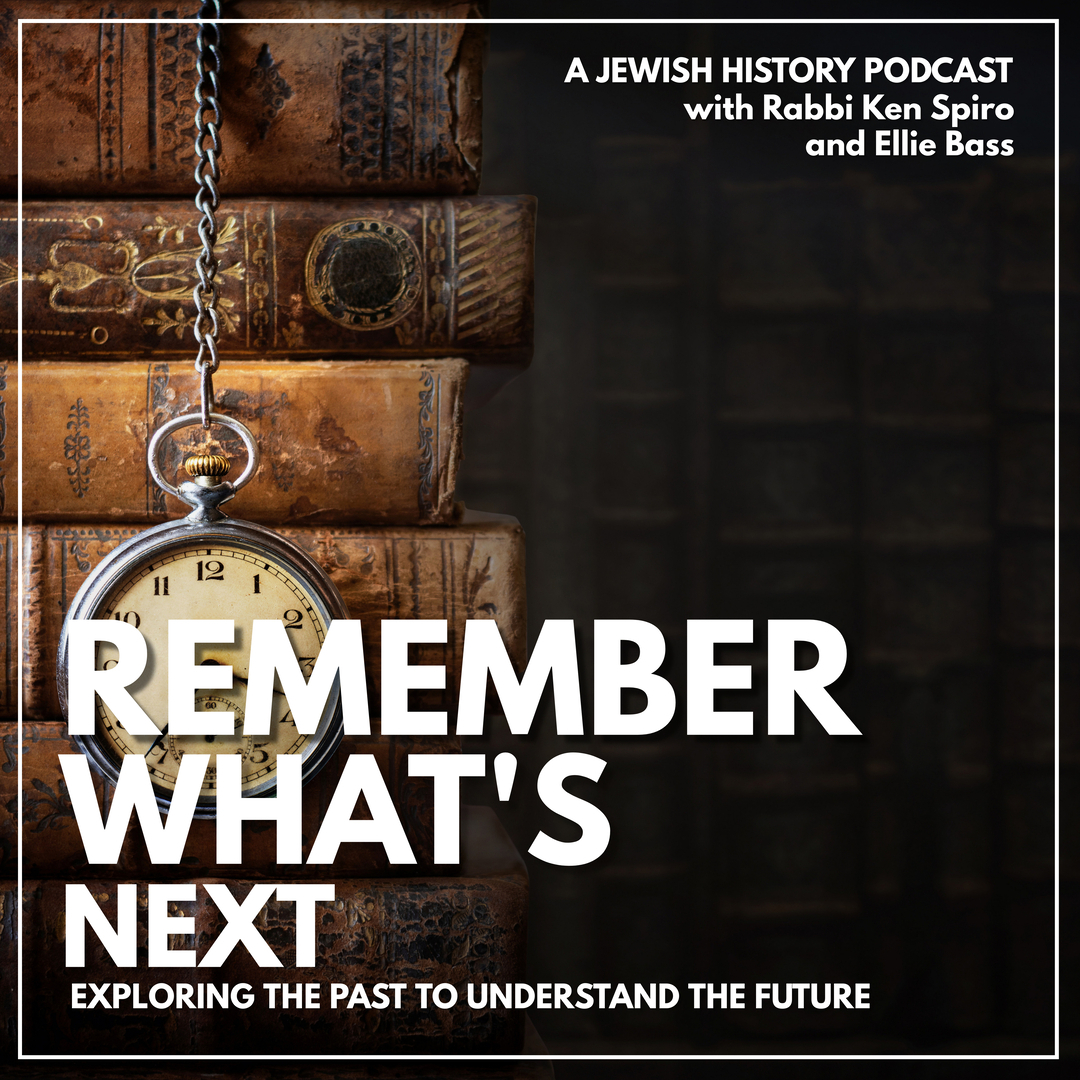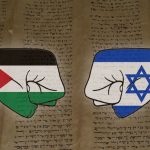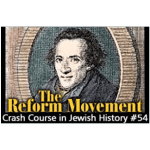History Crash Course #65: The State of Israel
The British broke their promise to the Jews while they created new Arab countries out of the land of the former Ottoman Empire. In addition, because of Arab revolts and pressure, the British even barred entry to the land of Israel to Jews fleeing the Holocaust. (See Part 64.)
Even when the full scope of the Holocaust was known, and thousands of Holocaust survivors were stranded in refugee camps (DP camps), the British refused to relent.
One of the most egregious of the British actions involved the refugee ship, Exodus, which the Royal Navy intercepted in 1947 in the Mediterranean Sea with 4,500 Jews aboard. The ship was brought into Haifa port under British escort; there the Holocaust survivors were forcibly transferred to another ship and returned back to Germany via France.
Abba Eban, who was then the Jewish liaison to a special UN committee ― called Special Committee On Palestine or UNSCOP ― persuaded four UN representatives to go to Haifa to witness the brutality of the British against the Jews.
Historian Martin Gilbert includes Eban’s account of what happened there in Israel: A History (p. 145):
“[In Haifa] the four members watched a ‘gruesome operation.’ The Jewish refugees had decided ‘not to accept banishment with docility. If anyone had wanted to know what Churchill meant by a “squalid war,” he would have found out by watching British soldier using rifle butts, hose pipes and tear gas against the survivors of the death camps. Men, women and children were forcibly taken off to prison ships, locked in cages below decks and set out of Palestine waters.'”When the four members of UNSCOP came back to Jerusalem, Eban recalled, ‘they were pale with shock. I could see that they were pre-occupied with one point alone: if this was the only way that the British Mandate could continue, it would be better not to continue it at all.'”
UN Partition of Palestine
The British also wanted out of the problem. They had 100,000 soldiers/police trying to maintain control with a total population of about 600,000 Jews and 1.2 million Arabs. (Interestingly, until its independence in 1947, they had the same size force controlling India with a population of over 350 million!)
And so it came to pass that the British turned the matter over to the UN which decided to end the British Mandate over what was left of “Palestine” (after the creation of the country of Jordan) and to divide the remaining land among the Arabs and Jews, based on the demographic reality within the country. (Areas with a majority of Jewish population would go to the Jews while areas with an Arab majority would go to the Arabs). The proposal called for the Jews to get:
- a narrow strip of land along the Mediterranean coast, including Tel Aviv and Haifa
- a piece of land surrounding the Kineret (Sea of Galilee), including the Golan Heights
- a large piece in the south, which was the uninhabitable Negev Desert
The Arabs were to get:
- the Gaza Strip
- a chunk of the north, including the city of Tzfat (Safed) and western Galilee
- the entire central mountain region of Judea and Samaria (today known as the West Bank) till the River.
Jerusalem was to be under international control.
On November 29, 1947, the United Nations voted for this partition plan . Of those voting, 33 nations voted yes, including USA and USSR; 13 mostly-Arab nations voted no; 11 nations abstained.[1]There can be little doubt that one of the primary reasons for U.N. support for a Jewish States came out of European guilt for the Holocaust. The death of millions of Jews “bought” enough … Continue reading
Hard-hearted to the end, the British did not vote yes; they abstained. They also announced that they would not cooperate in the execution of the partition plan and that they would depart from Palestine by May 15, 1948.
As disappointed as the Jews were with the portion allotted for the Jewish state, they felt that something was better than nothing after all the waiting and the pain.
However, the Arabs, always maximalist in their demands, rejected the UN resolution. The next day Arab rioting began, and two weeks later volunteers from surrounding Arab countries began arriving into Palestine to fight the Jews.[2]While armies from surrounding Arab countries had to wait until the British departed to officially invade, the actual fighting began immediately after the U.N. partition vote and the British did … Continue reading
The British, happy to be out of the situation, were packing up to go and turned their backs on what was going on. Writes David Ben Gurion in his Israel: A Personal History (p. 65):
“The British did not lift a finger to stop this military invasion. They also refused to cooperate with the UN committee charged with supervising implementation of the General Assembly resolution. At the same time, the Arabs living in the district destined to become part of the Jewish state began evacuating their homes and moving to the Arab states neighboring Palestine at the orders of the Arab High Committee.”
In the midst of confusion, the rioting continued with almost 1,000 Jews murdered by Arabs in the ensuing four months.
One of the worst incidents occurred on April 13, 1948. A convoy of doctors and nurses making their way to Hadassah Hospital on Mount Scopus was ambushed by Arabs. This happened 200 yards of a British police station. After a seven-hour shoot-out, during which the British did almost nothing, virtually all the members of the convoy (77) were killed. Some of the bodies were so badly burned that 24 were never identified.
Jerusalem Under Siege
In all of this, the British quietly encouraged the King of Jordan, Abdullah, to invade and annex the Arab sections to his kingdom. To Abdullah this was not enough. He wanted Jerusalem too.
As a result Jerusalem came under siege.
The focus of the struggle during April and May 1948 was the road to Jerusalem which passes through the mountains. The vehicles on that road are completely exposed to gunmen up above. It was on this road that all supplies to the Jews of the city had to come. But they could not get through. steel plates were welded on to trucks in attempt to create primitive armored cars that could withstand the constant ambushes. The narrow, winding road and the overweight vehicles made easy targets. Many were destroyed and the conveys of badly needed food and other supplies weren’t making it to Jerusalem,[3]Larry Collins & Dominique Lapierre, O Jerusalem,(Pocket Books, 1972), p. 327.
Hunger reigned. The residents of the Jewish Quarter of the Old City were completely cut off.
The most intense fighting for control of the road to Jerusalem took place at the Kastel in the mountains to west of Jerusalem. The Kastel was the site of an ancient fortress and the Arab forces used the position as the staging area for attacks on the convoys. On April 5, 1948 Haganah forced launched an attack on the Arab positions above the Jerusalem-Tel Aviv highway and the Kastel. The fighting was fierce and the position changed hands several times. And then an amazing incident happened. A young Yemenite Jew, who was not known for his shooting skills, killed Abdul Khader el-Husseini the leader of the Arab forces. Demoralized, the Arab forces called off their counter attack and by the next day they had abandoned their positions to attend his funeral.[4]In May 1948, once the war of Independence had officially begun, Arab forces were able to close the road off once again by firing from the British police station at Latrun. The Haganah (fledgling … Continue reading
As a result a huge convoy of 250 trucks of food was able to re-supply the city and several more convoys soon followed. Writes Berel Wein in Triumph of Survival (p. 397):
[On Shabbat, April 17, 1948] Jews left their synagogues and, with their prayer shawls still draping their shoulders, helped unload the convoy. The siege of Jerusalem was broken for the moment. The Arabs, however, mounted a strong counter-attack, and by the end of April once again cut the Jerusalem road… for the next seven weeks Jewish Jerusalem was isolated.
A New State Is Born
The official date given by the United Nations in their partition vote for the creation of the two new entities was May 15th, 1948.
Thus, May 14th was to be the last day of the British Mandate. At 4 p.m., the British lowered their flag and immediately the Jews raised their own.
It was a flag designed in 1897 by the First Zionist Congress. It was white (the color of newness and purity), and it had two blue stripes (the color of heaven) like the stripes of a tallit, the prayer shawl, which symbolized the transmission of Jewish tradition. In its center was the Star of David.
Thus on May 14, 1948 at 4:00 p.m., the 5th of Iyar, despite immense international pressure not to declare independence, Israel declared itself a state.
After 2,000 years, the land of Israel was once more in the hands of the Jews.
David Ben Gurion read the Declaration of Independence over the radio:
“The Land of Israel was the birthplace of the Jewish people. Here the spiritual, religious and national identity was formed. Here they achieved independence and created a culture of national and universal significance. Here they wrote and gave the Bible to the world…
“Exiled from Palestine, the Jewish people remained faithful to it in all the countries of the dispersion, never ceasing to pray and hope for their return and restoration of their national freedom.
“Accordingly we, the members of the National Council met together in solemn assembly today and by virtue of the natural and historic right of the Jewish people and with the support of the resolution of the General of the United Nations, hereby proclaim the establishment of the Jewish state in Palestine to be called Israel…
“We offer peace and amity to all neighboring states and their peoples and invite them to cooperate with the independent Jewish nation for the common good of all…
“With trust in the Rock of Israel, we set our hands to this declaration at this session of the Provisional State Council in the city of Tel Aviv on Sabbath Eve, 5th Iyar 5708, 14th day of May 1948.”
(Note that the Declaration of Independence of Israel ― unlike the American Declaration of Independence ― does not mention God. This is because the hard-line secularists that dominated the Jewish Agency opposed any such thing. “Rock of Israel” –which could be understood either as God or the Israeli Defense Force – became a compromise.)
Israeli Minister, Zeev Sharef described the scene:
…Rabbi Y.L. Fishman delivered the benediction of “Who hath kept and sustained and brought us to this day,” which the aged rabbi did in a trembling voice choked with emotion…Suddenly the full impact of what had been done came home. The significance of the creation of the state… As the signing of the document ended, Hatikvah was struck up by the orchestra; and it seemed as if the heavens had opened and were pouring out a song of joy on the rebirth of a nation. The audience stood motionless, transfixed… “The State of Israel is established! This meeting is ended!” It had taken 32 minutes in all to proclaim the independence of a people who, for 1,887 years, had been under the servitude of other nations… People embraced…tears of rejoicing streamed; yet there was grief for sons who had fallen and sons whose fate was in the womb of the future-grief and dread locked the innermost recesses of the heart. Outside thousands had gathered….The streets of Tel Aviv were filled with crowds…[5]Benjamin Blech, Eyewitness to Jewish History. (New York: John Wiley & Sons, Inc., 2004), p.267.
People were dancing in the streets. But not for long.
Almost immediately five Arab countries declared war and Egypt bombed Tel Aviv.
References
| ↑1 | There can be little doubt that one of the primary reasons for U.N. support for a Jewish States came out of European guilt for the Holocaust. The death of millions of Jews “bought” enough sympathy to allow for the creation of a Jewish State. Sadly, since the partition vote of 1947, the U.N. voting record on Israel has gotten progressively worse: In 1975 the U.N. voted to declare Zionism as a racist ideology (resolution 3379) and since 1990 fully two thirds of ALL U.N. resolutions have condemned Israel. For more on this topic see: Dore Gold, Tower of Babble-How the United Nations Has Fueled Global Chaos. New York: Crown Forum, 2004. and Eric Shawn, The U.N. Exposed-How the United nations Sabotages America’s Security. New York: Sentinel, 2006. |
|---|---|
| ↑2 | While armies from surrounding Arab countries had to wait until the British departed to officially invade, the actual fighting began immediately after the U.N. partition vote and the British did little or nothing to stop it. |
| ↑3 | Larry Collins & Dominique Lapierre, O Jerusalem,(Pocket Books, 1972), p. 327. |
| ↑4 | In May 1948, once the war of Independence had officially begun, Arab forces were able to close the road off once again by firing from the British police station at Latrun. The Haganah (fledgling Israeli army) tried several times to take Latrun but failed. Just as Jerusalem was about to fall an alternative road (nick named the “Burma Road”) was quickly cut through the rocky hills allowing badly needed supplies to arrive and prevent the fall of Jerusalem to the Arabs. |
| ↑5 | Benjamin Blech, Eyewitness to Jewish History. (New York: John Wiley & Sons, Inc., 2004), p.267. |










